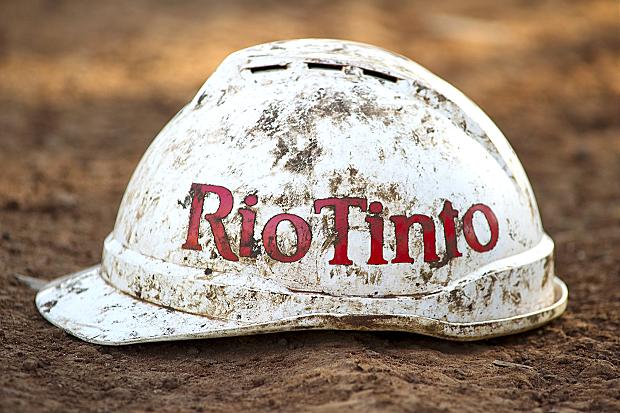Rio Tinto – Playing the long game

Rio Tinto (RIO), the mining company, continues to look an attractive equity investment with a good cash position, from which to continue paying growing dividends. I think its long-term prospects of capital appreciation also look reliable. The share price, last seen was 2,401p.
My last consideration of Rio was last June, when I penned the following conclusion: “Rio Tinto is now generating a lot of cash and has attractive dividend paying prospects. Given that and the fact that the share price is a fifth lower than the 3,503p of last August, I rate the shares as highly attractive at this level.”
The third quarter trading statement from the company partly tests the reasonableness of that judgment. It is all about production and shipping volumes rather than earnings and dividends. So, it is only a partial litmus test of the company’s progress since last June, in terms of fundamentals as well as share price.
To quotes Rio Tinto’s CEO Sam Walsh, the company continues to deliver efficient production, rigorous cost control and a sound allocation of capital employed. Even in the imperfect world of iron ore, that is an encouraging summary for long term investors. What they describe as Tier one assets generated “substantial free cash flow” adding that the company’s operating cash flow will permit the delivery of strong returns to shareholders through the cycle. It was also pointed out that the balance sheet was being strengthened by disinvestments.
The statistics
Iron ore and copper are the dominant production activities of Rio. On a year to year comparative basis, the company’s total iron ore production increased 12% to 86.1 million tonnes. That did not keep up with shipments which were running at 91.3 million tonnes – a 17% rise on a year to year comparison, and well ahead of production both in terms of volume and percentage increase. Rio was providing what the cost conscious market wanted: low cost ore.
Copper production, on the other hand, was well down – minus 24% on a year by year comparison basis to a reported 115 thousand tonnes. Apart from copper, the weak spots were semi soft and thermal coal production – down 8% year on year – and titanium dioxide down 34% year on year.
The key point is that iron or is by far the biggest activity and that, thanks to investment, particularly at Pilbara in Australia, is doing very well as the figures above show.
What the market thinks at this stage
Looking at the market consensus estimates, I note that this year to December 31st 2015 is judged to be the year of large falls in top line sales revenue and bottom line earnings per share. Taking a dollar/pound exchange rate of 1.52 dollars to a pound, sales revenue this year is estimated to fall by around 25% from a reported $47.7 billion last year to a guesstimated $36.0 billion this year (£23.7 billion). So a lot of downbeat sentiment about demand, measured in dollar sales, is already discounted in the estimates. That is reflected in the current consensus forecast dividend yields of 5.9% for this year and 6.1% for next year.
That is a level at which the current share price (2,401p last seen) arguably also discounts the possibility of a cut in dividend pay outs – something which the most recent consensus estimated do not envisage or forecast. Annual dividend payments next year are forecast by the consensus to increase by 3%, to give an annual 6.1% dividend yield for next year.
In terms of price to earnings ratios Rio shares are obviously not cheap unless you take a longer term view that includes some forthcoming recovery in. The shares at 2,401p are selling on forward, estimated price to earnings ratios of 14.6 times estimated earnings per share of 170p for this year and 15.6 times earnings of 151.8p estimated for next year, making the dividend outlook crucial to the relative attractions of Rio Tinto equity right now.
The June 30th balance sheet showed a declining expenditure on capital spending and investment and a healthy cash position. Between June 2014 and June 2015 investment spending fell by about one third from $3.84 billion to $2.16 billion. Year-end cash was $11.16 billion, up 16.5% from the $9.57 billion a year before. Operating cash flow was $4.4 billion. In short, interim dividend costs of $2.16 billion were well covered by operating cash of $4.4 billion and balance sheet cash of $11.16 billion by a ratio of approximately seven times.
In terms of value there was equity of $42.6 billion despite the fact that it had come down from $49 billion in 2011. In short, the current Rio Tinto share price is representative of a significant chunk of attributable net assets. On my own calculations (using a 1.52 dollar/pound exchange rate, that looks like something in the region of about 1,600p; thus considerably reducing the amount paid for earnings and the ‘pure’ price earnings ratio.
The accounts appear to justify the optimistic view that the company is likely to have enough cash to pay both progressive dividends and to bring down the balance sheet gearing that had been at 59% of equity last year.
Moreover, the annual share price chart shows a breakout from the recent downtrend, making what looks like to me a base and sideways trading pattern.
Miners do not suffer carbon emission restrictions in the same way as oil is likely to. Furthermore, infrastructure spending will not reach previous peaks in China but it has obviously not ended. India awaits such spending, in due course.
Estimated dividend yields and balance sheet assets continue to make these shares look attractive for longer term capital appreciation and short term dividend income. In my book, the shares are marked down as continuing to be attractive and good value.
Comments (0)